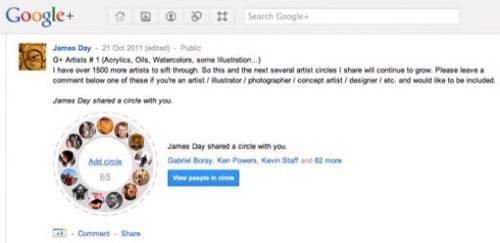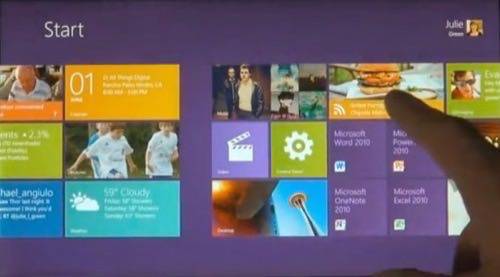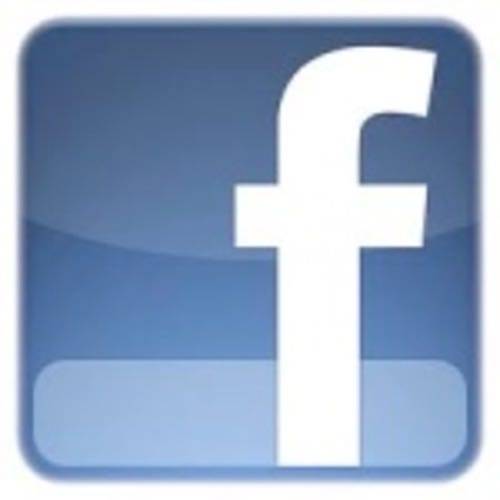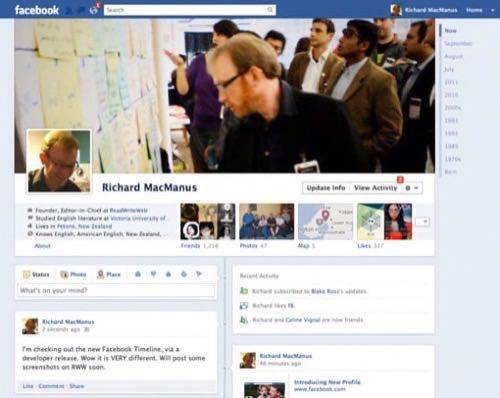Every year there are at least a few surprising new Web products or developments. Things that you never saw coming, but which either radically change the Web landscape or become a delightful user experience. In rare cases, both. The iPhone announcement of January 2007 was one such case. An example of a surprising development which had a huge impact on the Web was Facebook’s platform launch in May 2007. An example of a product which instantly hooked users with its unique experience was Flipboard in July 2010.

So what caught us by surprise and won us over in 2011? Here are our top 5 picks.
1. Google Does Social: Google+
Back in January, nobody expected any company to challenge Facebook’s dominance of social networking. Next to Facebook’s All-American quarterback, MySpace was too flakey, Twitter too geeky and Apple too snobby. As for Google, when it came to social it was like the class nerd who kept asking girls out and getting rejected: Orkut, Buzz, Wave were just three of its (relative) failures. Google couldn’t get social right. So when people began to hear of the next Google attempt at social, something called Circles that ReadWriteWeb got the scoop on in March, the natural reaction was to dismiss it.

Yet when Google+ officially launched at the end of June, it surprised everyone by how good it was. The circles concept enabled people to easily group people, the video chat “hangouts” were a popular innovation, and Google+ integrated with other Google products extremely well. Most surprising of all? It got rapid uptake, climbing to over 40 million users within months. Google+ may not be the winning quarterback of social networking – that’s still Facebook – but it achieved the touchdown of the year on the Social Web.

2. Microsoft Does Touchscreen… on Desktops: Windows 8
Microsoft is not known for surprising people, but the latest version of its Windows operating system featured an unexpected development. Touchscreen would be integrated into the Windows UI. Windows 8, Microsoft announced in June, will be used across a wide range of computing devices – PCs, laptops, tablets and more. One OS for all of those devices. This runs counter to Apple’s philosophy, which has separate OS’s for its desktop / laptops (Mac OS X) and tablets / mobile phones (iOS).

Whether or not touchscreen on a desktop computer is actually a good idea remains to be seen. But it’s a brave move and – if it works – will show that the old dog Microsoft still has some tricks.
3. Facebook Does Beautiful Design: Timeline
Facebook showed this year that it too still has the capacity to change things up, with the September announcement of a radical new design for its profile page. The Timeline turns your profile from a status-focused Wall into a colorful chronology of your life.

It’s still being debated whether this move will please the majority of Facebook’s users. That’s because Timeline is not yet widely deployed, nearly 3 months after its developer release launch. It was made available in my home country of New Zealand last week, so we’ll soon find out if it delights Facebook users all around the world.

4. Amazon Does Tablets: Kindle Fire
Amazon had a strong 2011. It’s often now discussed as one of the “big 4” of Internet companies, along with Google, Apple and Facebook. In part that’s because of Amazon’s impressive track record of innovating new products: EC2 and the Kindle are two examples from recent years. This year Amazon surprised us again, with an entry into the tablet market currently dominated by the iPad. The Kindle Fire, announced late September, is smaller and costs less than half of what the iPad retails for. Already it’s proving popular, although not without some teething problems.

5. Björk Does Apps: Biophilia
Finally, here’s a wonderful example of how a smartphone or tablet app can take you by surprise and delight you. In August I reviewed the new album by Iceland’s greatest export, Björk. Billed as the world’s “first app album,” it’s an iPad and iPhone app featuring 10 songs. Each song is accompanied by an interactive app. The “mother” app is called Biophilia, which is the name of the album. That is available free on iTunes, but the ‘song’ apps then cost $1.99 each and are bought from within the main app. The first song, ‘Cosmogony,’ is included free.

In an age where musicians are having to find new ways to release their music and make money from it, Björk showed that apps are one way to adapt and thrive. Apps are also a lot of fun for music consumers.
Those were our five biggest surprises of 2011, let us know what unexpectedly bowled you over (in a good way) in the comments!










